Best Color, B&W & Slide 35mm Film
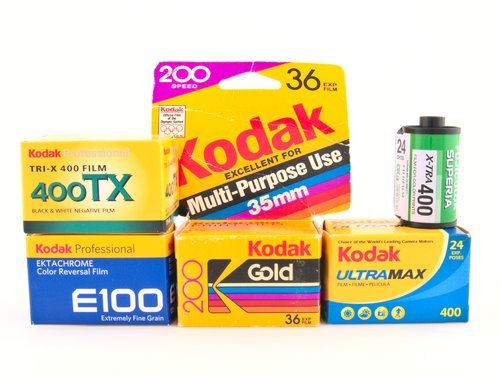
The switch to digital has caused an ongoing wave of emulsion discontinuations. The result is that there are few choices of film, it can be hard to find, and expensive.
Developing film yourself is one way to reduce costs. Bulk rolling 100’ rolls is another way.
Affiliate Links
Outside the Shot is a participant in the Amazon Services LLC Associates Program, an affiliate advertising program designed to provide a means for sites to earn advertising fees by advertising and linking to Amazon.com.
As an eBay Partner, I may be compensated if you make a purchase. I also participate in affiliate advertising programs with KEH and Adorama. More can be found on the Affiliate Discolsure page.
I have purchased gear from all of these companies and I expect them all to receive repeat business from me.
Color Film
Consumer Grade Film
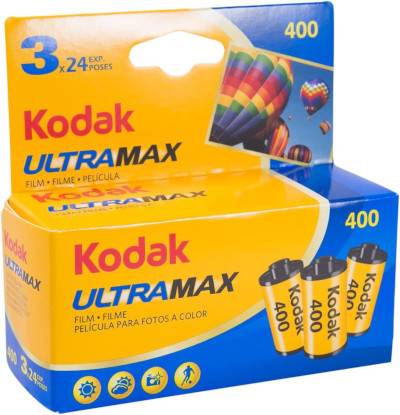
Kodak UltraMax 400 - This film handles a multitude of lighting conditions well and is a good pick for a 35mm color film.
Expect images to look a little warm with pleasant skin tones.
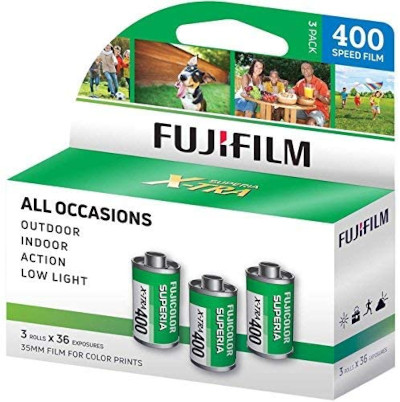
Fujifilm Superia X-TRA ISO 400 - Availability varies by country and distribution.
Fujifilm photos have cooler colors with notable blues and greens.
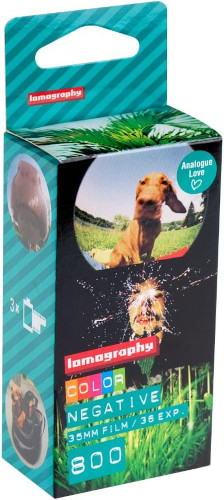
Lomography 800 - If you want a color 35mm film with an ISO of 800, there aren’t many options. This happens to be the only 35mm film stock targeted towards consumers.
In addition, if you have a medium format camera, it is also available in 120 film format.
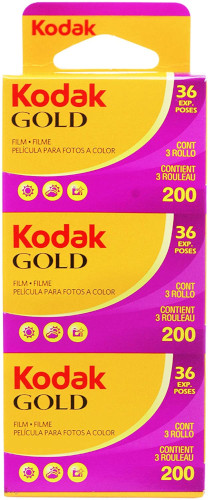
Kodak Gold 200 - A staple film stock that was released in the mid-1980s. Kodak Gold 200 offers the look of home snapshots from the 1980s and 90s. For the genuine photography experience have an on-camera flash.
To really bring the ideal look out of the film, you will want to over-expose it by 1 or 2-stops. This will provide you with the fantastic colors people love Kodak Gold for.
Professional Grade Film
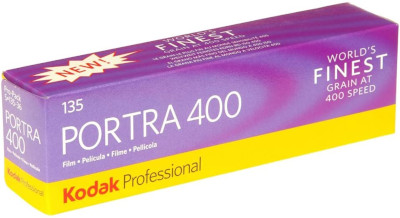
Kodak Portra 400 - This film stock is a favorite among film photography enthusiasts. Overexpose it by 1 or 2-stops to get the overall look the film is highly regarded for.
There are also ISO 800 and ISO 160 emulsions of Portra. Portra is also offered in rolls of 120, 4x5 sheets, and 8x10 sheets.
Black and White Film
Consumer Grade Film
These film stocks have affordable prices and more than acceptable quality.
“Professional” rolls have a wider latitude and finer grain. Wider latitude film have more detail in the shadows and highlights. Post processing or darkroom techniques enable showing more detail.
These film stocks are good for new photographers, as test rolls, and for the budget conscious. Some are available in 100’ rolls for bulk loading.
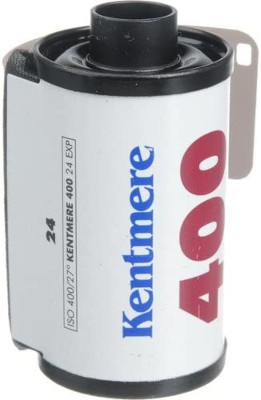
Kentmere 400 - Produced by Harmon Technology, which is the parent company of Ilford. This is notable because that makes this the most widely available film of the three.
Kentmere 400 has an smooth tonal range and medium amount of contrast.
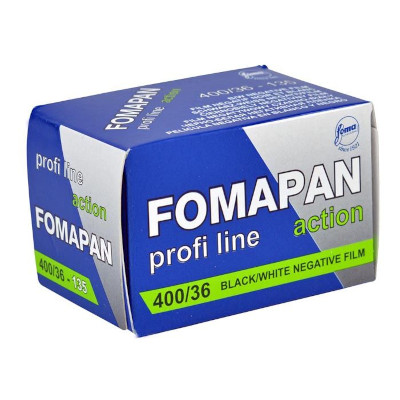
Foma Fomapan 400 Action - Can be easier to get in Europe as the film is produced out of the Czech Republic by Foma Bohemia.
An affordable film stock that gives great results. Features strong contrast and large grain.
A solid film stock to employ for your first couple of attempts at analog photography or developing film at home. Also a good option if you are trying out a camera to make sure that it is totally functional.
Professional Grade Film
Ilford HP-5 Plus 400 and Kodak Tri-X 400 are the two best black & white films. They possess several capabilities that are similar that help make them a favourite, while maintaining different appearances.
You can obtain quality images after pushing both films 2-stops. This makes the film versatile as a roll can be shot at ISO 400, 800, or 1600.
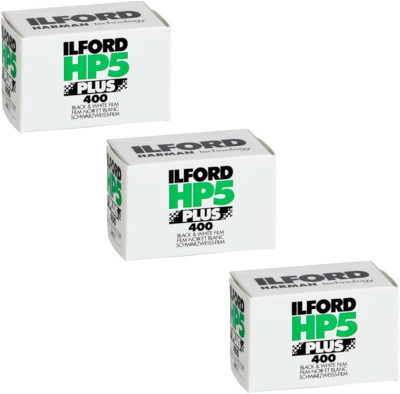
Ilford HP5 Plus 400 - Between the two film stocks, HP5 Plus is less expensive and has lower levels of contrast. Less contrast can be helpful because contrast can be adjusted when making a print or editing digitally.
The film emulsion has subtle grain and still looks great when pushed 2-stops.
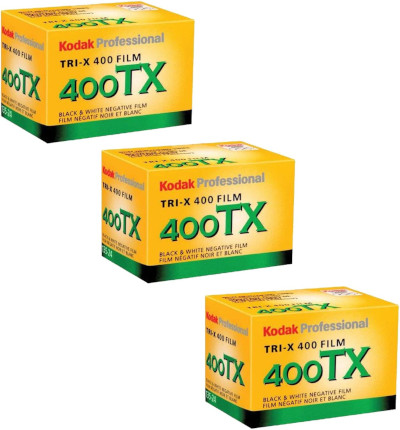
Kodak Tri-X 400 - This film emulsion possesses a more distinctive aesthetic. To create the legendary grain structure, contrast, and look of the film, it should be developed in D-76.
You’re going to undeniably see more contrast with Kodak Tri-X 400. That is very good if that is the overall look you would you like because it involves substantially less work when editing digitially or making a darkroom print.
Reversal Film (Slide Film)
Transparency film, also known as reversal film or slide film, gives you a positive picture. That means a projector or lightbox can be used to display the pictures.
Colors do not need to be inverted to be seen, contrary to the more readily available negative film stocks.
Slide films are viewed as tricky to work with due to the fact slide film has a smaller amount of latitude and dynamic range when compared with negative film.
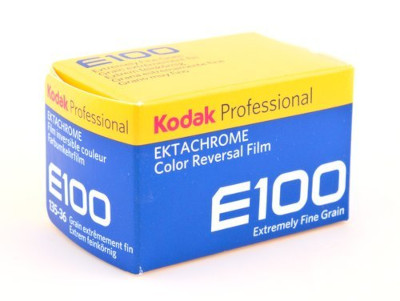
Kodak Ektachrome 100 - This is a fine grain film known for beautiful skin tones. There is almost no hypersaturation of colors. Ektachrome has been balanced for daylight.
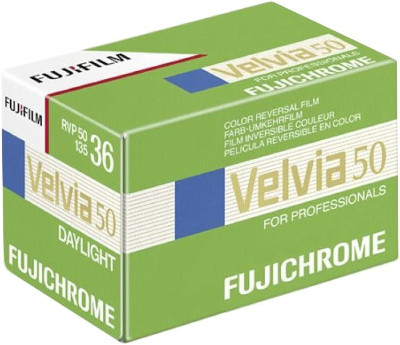
Fujifilm Velvia 50 - Produces distinct looking shots that have increased levels of contrast and saturation. It is razor-sharp and balanced for daylight. Compared to all the transparency films offered, it has the top resolving power.
There is another speed that is ISO 100.
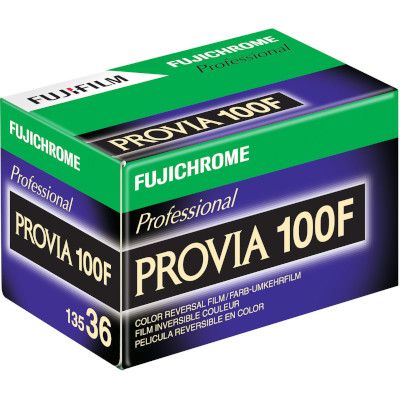
Fujichrome Provia 100F - Produces vibrant and realistic colors with medium contrast and color saturation. It has a daylight color balance and ultrafine grain.
Film Basics
Consumer vs Professional Film
Pro film stocks have a greater dynamic range, are easier to push, and larger latitude, which is why pro-film costs more.
You should expect a difference in availability. Consumer film stocks can generally still be found in big-box stores and pharmacies in small quantities. Professional quality film will need to be bought from a online or specialized photography store.
ISO
The ISO represents the film speed, that can also be thought of as the film’s sensitivity to light.
The higher the film’s ISO, the less light is required to capture a frame. Additionally, be prepared for increased film grain.
It might be quite challenging to handhold a camera with ISO 100 or slower films (ISO 25, ISO 50, etc). The might be longer can be longer than what you can handhold without causing motion blur unless you’re out in full sun.
A tripod, flash, and/or fast lens can help you with longer exposure times. The extra equipment might not be needed if you pick a faster ISO 400 or ISO 800 film.
The transition to using ISO from ASA (American Standards Association) came after the creation of the International Standards Organization (ISO).
Film Latitude
Latitude is the amount of stops a film can be overexposed while still keeping adequate photographs. Professional film stocks have a larger latitude along with a slightly increased cost.
Slide film has less latitude compared to negative film. That is one of the reasons it’s perceived as more challenging to work with.
Dynamic Range
The range between the highlights and shadows details of a photograph is referred to as dynamic range. Parts of a photograph that do not fit in this range will be rendered as black underexposed shadows or completely white overexposed highlights.
When working in a wide variety or quickly changing lighting conditions, films with a bigger dynamic range are a superior choice.
- Digital cameras 14+ stops
- Negative film up to 13 stops
- Slide film 6-8 stops
The constrained dynamic range of slide film is a second reason it’s thought to be a challenge to shoot. A fantastic time to test it out is during the golden hour.
Film Type
35mm is a popular film stock that is most commonly sold in cannisters. It can also be referred to as 135 film, and it’s the most popular type of film.
The only other type of film you are going to encounter is 120 or 220 film that is used with medium format cameras}.
One of the fantastic properties of film is that you can swap the film you work with and get a totally different look to your images.
DX Coded Film
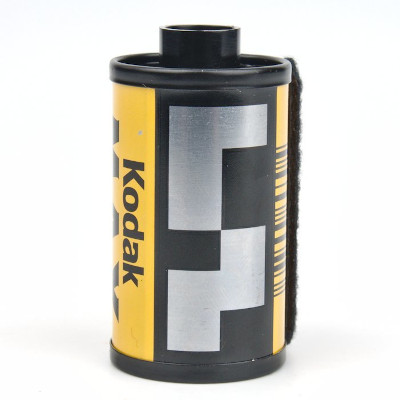
Nearly all available 35mm film sold today has DX encoding on the canister. This makes it possible for electronically controlled cameras to detect and set the ISO when the film canister is loaded.
Where to Get Film Developed?
There are a handful of possible choices for where to get 35mm film processed. For a more extensive explanation of the possible choices go to my article on Where to Get Film Developed.
WARNING: Big box stores and pharmacies have stopped processing film at the store. They mail the film off-site to be processed by a third party. This means that, you won’t receive your developed negatives back.
- Develop Film at Home
- Use a Local Photography Lab
- Use a Mail Order Photo Lab
- Pharmacy or Big Box Store
Shipping your film to a mail-order photo lab to be developed and scanned is the least complicated solution if you’re just beginning to shoot film. If you regularly use film, this could be a drawback due to the fact that it can get really expensive.
Assuming that you’re shooting a medium to high volume of film, there are a few actions that can be done to limit your costs.
Bulk Loading Film
One of the ideal methods to spend less money on film is to buy a roll of 100 feet of film and manually load it into canisters by hand.
Once you are done, you will get around 18 rolls of 36 frames. Based on the film you are likely to save 20%-30%.
Another thing to keep in mind is that you are limited to bulk rolls of black and white film. This is because black and white film is less difficult and cheaper to process at home.
Home Developing and Scanning
Any film can be developed at home. Many photographers develop their own film to cut costs. It also give complete control of the process.
Black & white film is by far the least complicated to process. Chemical temperature and development times are not as important with black and white film. Color or slide film needs accurate temperatures for development.